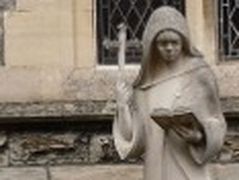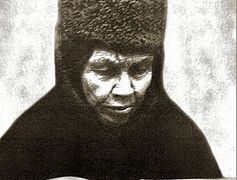Pereslavl-Zalessky, Yaroslavl Province, Russia, July 3, 2023
The Pereslavl Diocese of the Russian Orthodox Church is collecting information about the revered ascetic Hieroschemamonk Joachim (Ulyanov) of the Holy Resurrection Monastery in Uglich.
Stories and information are being collected “for the subsequent canonization of the ascetic,” the diocese reports.
A working group of priests and historians involved in the task. Thus far, the group has collected a large packet of various documents and archival information, including information that has never been published in open sources.
To date, a complete life of Fr. Joachim has been composed.
Optina Monastery is also actively collecting miracle stories about the 1993 Pascha Martyrs, Hieromonk Vasily (Roslyakov), Monk Trophim (Tatarinov), and Monk Therapont (Pushkarev), Archimandrite Benedict (Penkov), who served as abbot from 1990 until his repose in 2018, Igumen Theodore (Trutnev), who labored at the monastery from the time of its reopening in the late 80s until his repose in 2003, and Hierodeacon Iliodor (Gairiyants), a monk of Optina from 1989 until his repose in October 2020.
And in the Pskov Diocese, stories and information about the revered Elder John (Krestiankin) are actively being collected for his eventual canonization.
***
 The schema of Fr. Joachim. Photo: turliner.ru Hieroschemamonk Joachim (named Simeon in the world) was marked by a life of piety while still in the world. He was ordained to the priesthood in Rostov on January 25, 1679, to serve in the Church of the Great Martyr George in the village of Yurievskoe, Uglich County, and later in the Church of the Holy Trinity in the village of Mimoshna.
The schema of Fr. Joachim. Photo: turliner.ru Hieroschemamonk Joachim (named Simeon in the world) was marked by a life of piety while still in the world. He was ordained to the priesthood in Rostov on January 25, 1679, to serve in the Church of the Great Martyr George in the village of Yurievskoe, Uglich County, and later in the Church of the Holy Trinity in the village of Mimoshna.
He had at least two sons, one of whom became a priest. In 1707, Fr. Simeon was widowed and he joined the brotherhood of Holy Resurrection Monastery, taking vows with the name Sergei. According to the custom of that time, as a widowed priest entering the brotherhood, he did not serve at first, in order to learn humility and obedience. He began to hear confessions and celebrate the services again five years later.
Sometime after 1718, he accepted the schema, receiving the name Joachim. He led an ascetic lifestyle. He wore chains, ate only bread and water, and slept in a coffin he made himself.
The date of his repose is unknown, but presumably he reposed somewhere between 1718 and 1731.
The relics of Fr. Joachim were found by chance during World War II, when work was being done in the basement of the Resurrection Cathedral and his coffin was found a meter underground. According to eyewitnesses, his coffin was placed standing up against the wall, and local schoolchildren came and tore pieces of clothing and even flesh from the relics.
After some time, the coffin was loaded in the back of a truck, and just then a thunderous voice was heard: “I’ll be back in 50 years.”
The relics remained in the Uglich Museum for some time, and were later moved to the Yaroslavl Medical Institute at the Department of Forensic Medical Examination, where they were used as a visual aid for students.
In the early 1990s, the clergy of Uglich learned of the incorrupt relics at the medical institute, and thanks to the many efforts of Archpriest Vladimir Buchin and His Eminence Archbishop Micah of Yaroslavl and Rostov, they were returned to the Church on December 28, 1995. The relics were taken to the Church of Tsarevich Dimitry where Abp. Micah and local clergy served the first memorial service for the ever-memorable elder.
Since that time, there have been innumerable cases of miracles, in particular, healings from incurable diseases, attributed to the relics and prayers of Fr. Joachim.
After the revival of the Holy Resurrection Monastery in the late 90s, the relics of Fr. Joachim were transferred back to his place of asceticism on August 10, 2001.
Follow OrthoChristian on Twitter, Vkontakte, Telegram, WhatsApp, MeWe, and Gab!




